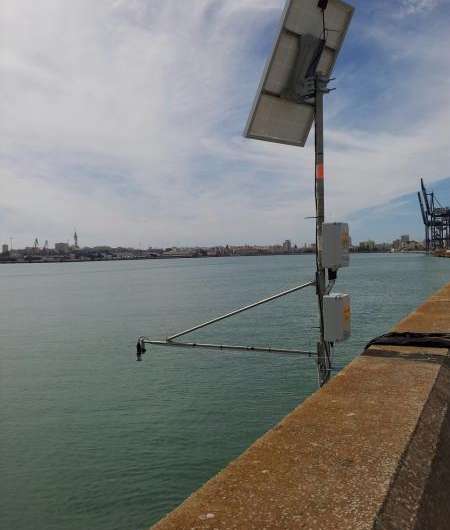Tsunami early warning: JRC tests new low-cost device to measure sea level

A new, low-cost experimental device for sea level measurement has been developed by JRC scientists. The first four devices have been installed in Spain and Portugal, in collaboration with the European Commission's Directorate-General for Humanitarian Aid and Civil Protection and the UNESCO Intergovernmental Oceanographic Commission (IOC). Additional 16 devices will be installed in the Mediterranean and will concretely contribute to the improvement of tsunami monitoring activities.
Tsunami early warning systems are based on observation networks of seismometers and sea level measuring stations, which send real time data to national and regional warning centres (TWCs). Based on these observations, TWCs are able to confirm or cancel a tsunami watch or warning.
The presence of devices for sea level measurement in many different locations along the coast is crucial for effective tsunami monitoring, but so far the high installation and maintenance cost of these devices have prevented their large-scale use.
The JRC has developed the Inexpensive Device for Sea Level Measurement (IDSL), a novel mareograph system to measure the sea level in real time. Compared to existing similar devices, the IDSL has a very low cost while still providing high quality measurements within few seconds. Sea level data are measured every five seconds and transmitted to JRC servers through the GPRS phone lines and thus immediately available for analysis. A web site is available to visualise, analyse and download the data as soon as they are stored.
The first four devices were installed in October on the Spanish coast in Cartagena and Cadiz and in Albufeira and Sagres in Portugal. Another 16 devices will be installed in the near future in Greece, Italy, Lebanon, Morocco, Romania, Tunisia and Turkey in order to further test the IDSL reliability, duration and quality.
This project contributes to the activities of the North Atlantic and Mediterranean Tsunami Warning System (NEAMTWS) set up by the UNESCO Intergovernmental Oceanographic Commission (IOC). By the end of the installation period, the Tsunami Monitoring Centres will have at their disposal devices allowing real-time analysis of tsunami events, contributing to a major improvement in their monitoring capacity.
Background information
For tsunamis, the JRC has developed and operates the only worldwide operational automatic impact-based alerting system, which is different from the UNESCO warning systems, as it provides information about the potential impact (estimated wave heights affecting populated coastlines) and not only about confirmed threats (seismic activity and observed sea level).It is based on pre-calculated tsunami scenarios and the alerts can be fed into international or national warning systems.
The JRC's tsunami assessment modelling system is part of the EU-UN Global Alert and Coordination System (GDACS) which also alerts on earthquakes, cyclones or floods.
Provided by European Commission Joint Research Centre



















